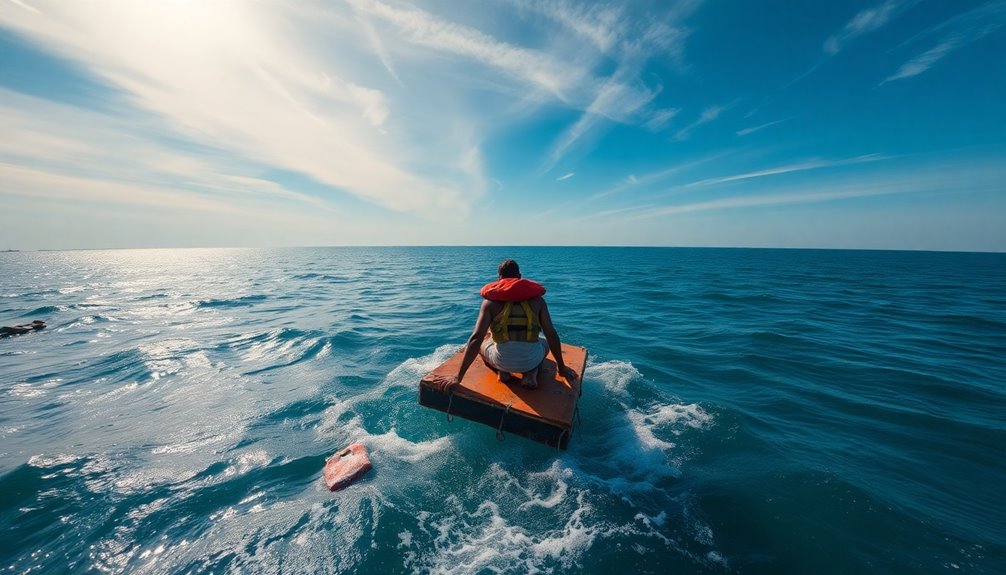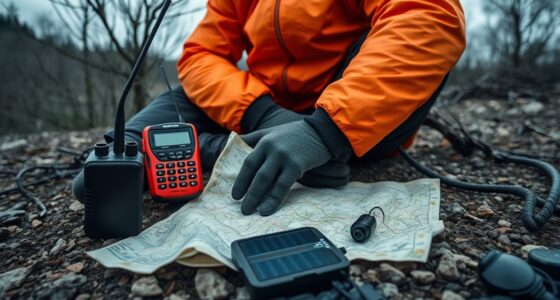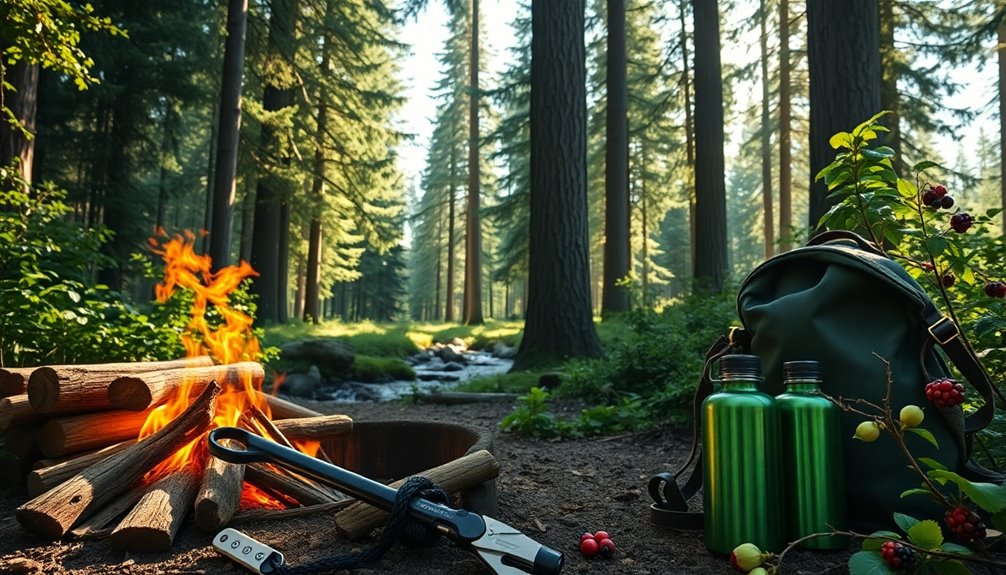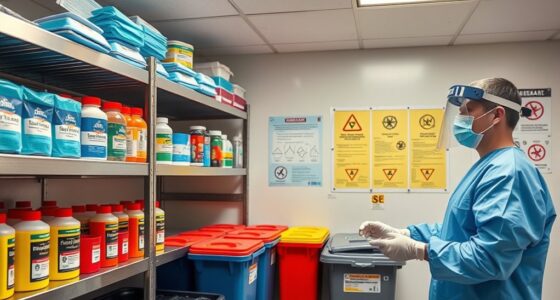To survive at sea, you need to master a few crucial tips. First, conserve energy by back floating to stay afloat. Collect fresh water through rainwater catchment methods, and remember to delay eating until hydrating is secure. Use improvised fishing techniques for food. Signal for help using visual aids like flares or large SOS signs made from debris. Stay positive and establish a routine to maintain your mental resilience. Finally, prepare in advance by knowing your survival gear. These strategies can significantly boost your chances of survival, and if you keep exploring, you'll uncover even more vital information.
Key Takeaways
- Stay afloat using back floating techniques to conserve energy while awaiting rescue or assistance.
- Prioritize fresh water collection through rain catchment and create solar stills to purify seawater.
- Delay eating until you have secured a reliable water source; catch fish for hydration and sustenance.
- Utilize visual and sound signaling methods, such as flares and whistles, to attract attention from rescuers.
- Maintain a positive mindset and establish a daily routine to enhance mental resilience and focus during survival situations.
Introduction
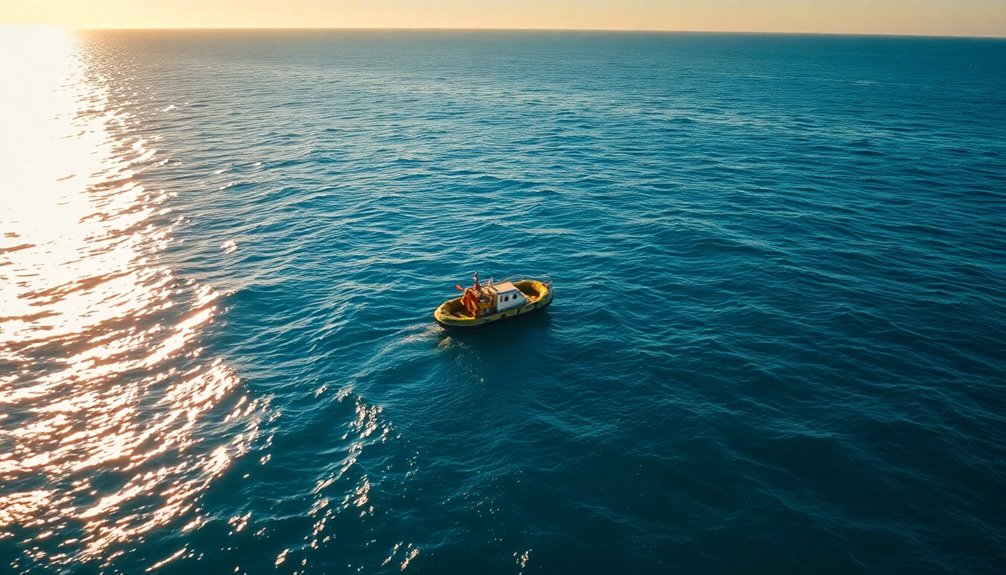
In a sea survival situation, knowing key strategies can make all the difference.
You'll need to focus not only on practical techniques but also on developing a strong survival mindset.
Key Survival Strategies Outlined
Surviving at sea demands quick thinking and effective strategies to increase your chances of staying alive. First, focus on staying afloat; use techniques like back floating to conserve energy and keep your head above water.
Next, prioritize drinking water by collecting rainwater. Use tarpaulin or fabric to catch and store it, but avoid the first drops to dodge salt contamination. Delay eating until you have a reliable water source, then focus on catching fish with improvised lines or hooks for sustenance.
Additionally, employ natural navigation methods, like observing the sun and stars, to find direction. These strategies will help you maintain your energy and increase your likelihood of rescue while ensuring you stay hydrated and nourished.
Survival Mindset Essentials
A strong survival mindset is crucial when faced with the daunting challenges of the open sea. Maintaining a positive mental attitude significantly impacts your will to live and can enhance your chances of survival.
To stay calm in high-pressure situations, establish a routine that brings structure to your day. This reduces anxiety and keeps you focused. Setting small, achievable goals can also boost your morale and provide a sense of purpose, vital for psychological resilience.
Remember to practice self-talk and mindfulness techniques to combat despair, helping you stay centered. By honing your survival mindset, you can make rational decisions and effectively navigate the uncertainties of your environment.
Your mental strength can be your greatest ally in survival.
Survival Skills Overview
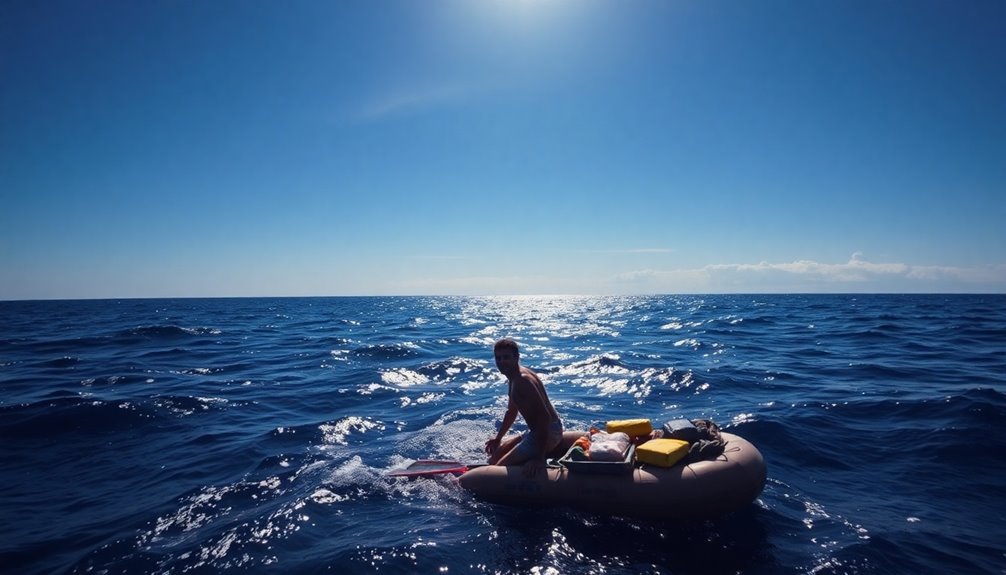
Survival skills are your lifeline in the vast and unpredictable ocean. Familiarizing yourself with essential survival equipment like life vests and emergency flares is crucial for effective rescue communication.
You need to master various water collection techniques, such as using tarps to catch rainwater or creating solar stills, since survival without water typically lasts only 3-4 days.
Additionally, honing your fishing skills can be vital; improvising fishing lines and hooks allows you to procure food that provides both nourishment and hydration.
Remember, understanding buoyancy techniques can help conserve energy, while awareness of environmental hazards and navigation methods keeps you oriented.
Each skill you develop increases your chances of survival in an emergency at sea.
Essential for Emergency Preparedness
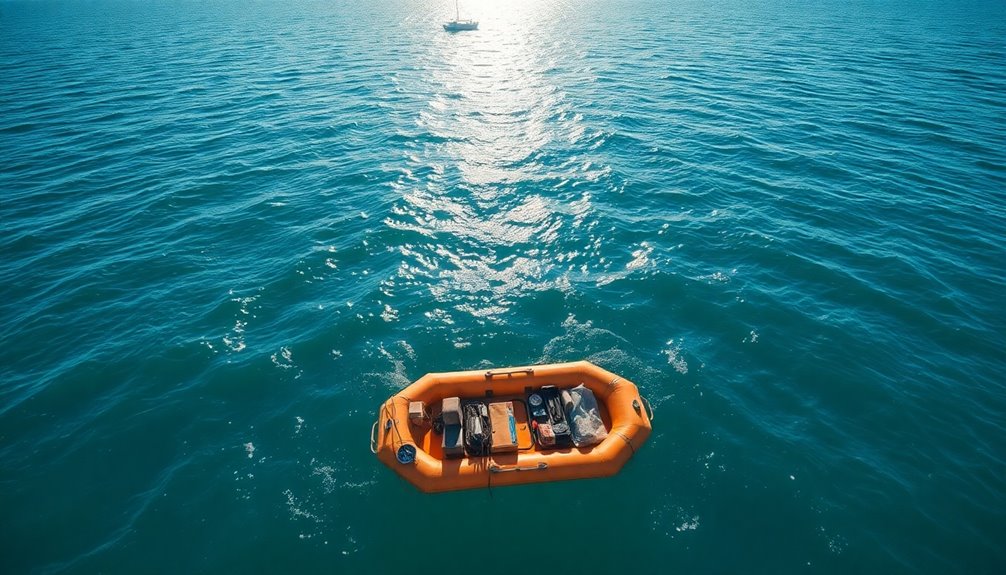
When you're out at sea, having the right emergency equipment is critical for life preservation.
Weather conditions can change rapidly, so you need to be prepared for any situation that may arise.
Critical for Life Preservation
In the unpredictable environment of the open ocean, having a solid plan for life preservation is essential.
First, prioritize collecting fresh water through rainwater catchment methods, as you can only survive without it for about 3-4 days. Familiarize yourself with your onboard survival equipment, including the location of life vests and signaling devices like flares. This knowledge ensures a quick response during emergencies.
Maintain a calm mindset; psychological resilience is crucial for making sound decisions. If you find yourself in the water, consider using improvised flotation devices like empty containers or filled trousers to enhance buoyancy.
Establish a clear signaling plan before you head out, employing reflective materials to increase visibility to rescuers.
Survival Based on Weather Conditions
Understanding how to adapt your survival strategies based on weather conditions significantly boosts your chances of making it through an emergency at sea.
In hot weather, rig a sunshade and cover your skin to prevent sunburn and avoid attracting dehydration—remember, you can only survive 3-4 days without water.
If it's cold, wear an anti-exposure suit and keep the raft floor dry to retain body heat and prevent hypothermia.
Use improvised windbreaks during rough weather to shield yourself and keep your head clear.
During extreme conditions, staying calm and conserving energy through effective floating techniques can enhance your survival chances.
Regularly assess the weather and adjust your strategies, seeking shelter during storms or using currents to help you move.
Improvised Flotation Devices
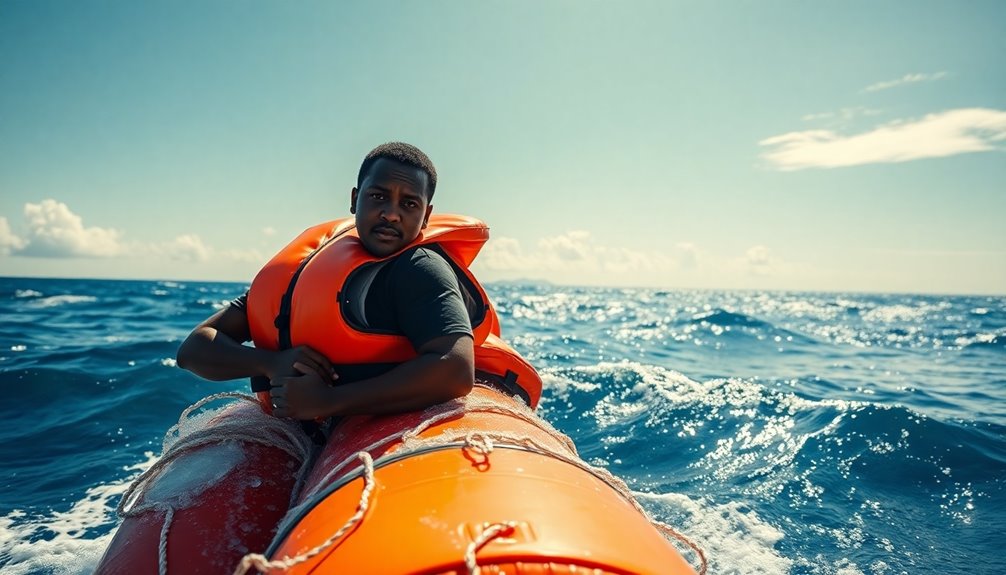
Creating improvised flotation devices can be a lifesaver in emergency situations at sea. If you find yourself in the water, consider using your trousers. Knot the leg ends and fill them with air; this helps your body to float.
Dead wood or logs can also serve as makeshift rafts due to their natural buoyancy. If you have empty containers like gallons or barrels, bind them with ropes if you can, enhancing your chances of survival.
Remember, removing unnecessary items like shoes and jewelry reduces weight, allowing your body to float more easily and conserve energy.
Stay calm, and look for anything that can provide buoyancy until rescue arrives. Your resourcefulness can make a difference in dire circumstances.
Survival Gear Essentials
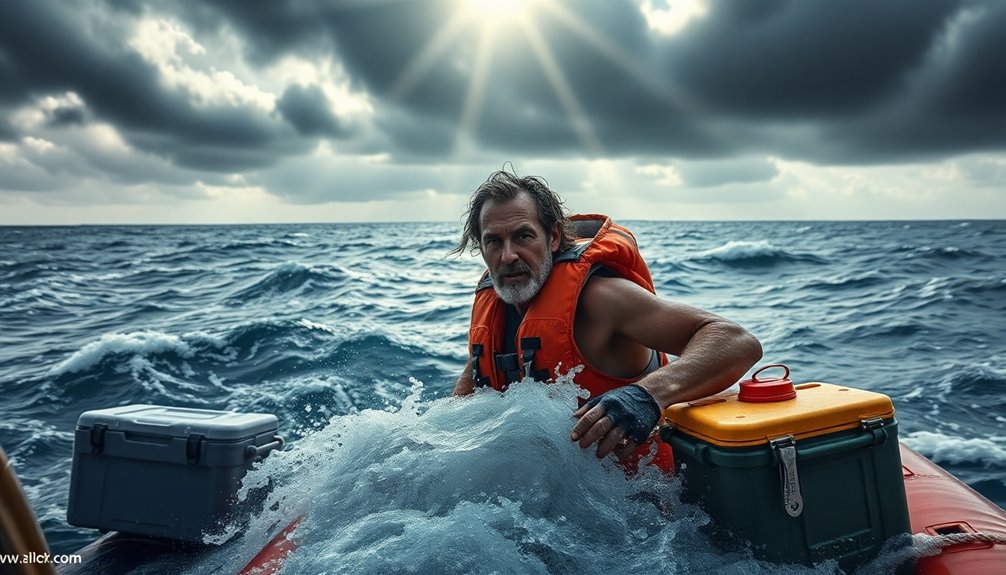
When you set sail, having the right survival gear can make all the difference in an emergency. Start with a life vest, which boosts your buoyancy and survival chances in the water.
Don't forget a well-stocked first-aid kit containing bandages, antiseptics, and medications for potential injuries. A reliable signal device, like a flare gun or whistle, is crucial for attracting rescuers' attention when needed.
Ensure you carry non-perishable food items, such as energy bars, along with an ample water supply to keep your energy and hydration levels up during any unexpected situations.
Finally, include a VHF radio for effective communication with other vessels or emergency services, giving you a way to call for help when it matters most.
Water Purification Techniques
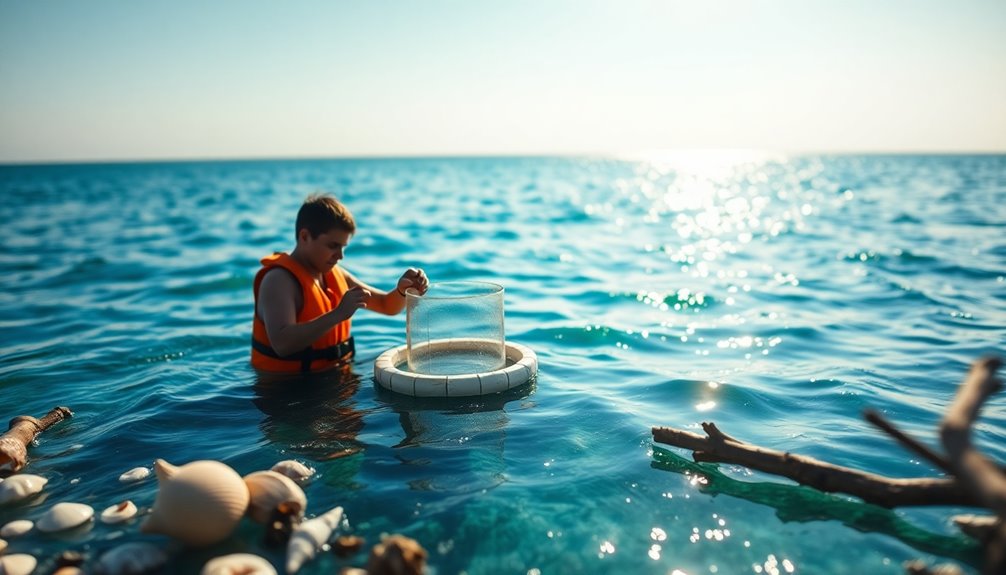
In a survival situation at sea, securing clean drinking water is crucial for your well-being. One effective method is to catch rainwater using materials like tarpaulins or fabric. Remember to discard the first few drops to avoid saltwater contamination.
If you can't catch rain, consider using a solar still; it purifies seawater by evaporating and condensing water through sunlight, providing you with safe drinking water. If you have water purification tablets, use them to eliminate any pathogens in your collected water.
Additionally, you can extract fluids from fish by cutting them open and sucking out the liquids. Above all, avoid drinking seawater at all costs, as its high salt content can lead to dehydration and serious illness.
Dehydration and Water Sourcing

When you find yourself stranded at sea, securing fresh water is your top priority since you can only survive 3-4 days without it.
Collecting rainwater or using fish for hydration can make a significant difference in your survival chances.
Emergency Signaling Techniques
Signaling for help is crucial in a survival situation at sea, especially when dehydration threatens your well-being.
Use emergency signaling techniques to increase your chances of rescue. Visual aids like flares or mirrors can attract attention from passing ships or aircraft. If you have bright clothing, waving it can serve as a distress signal, making you more visible against the ocean.
You can also create large SOS signals using floating debris or arranging items in your raft. Regularly check your signaling equipment, like whistles and flashlights, ensuring they're functional.
Emergency Signaling Techniques
Desperation for water can overshadow your ability to signal for help at sea, but both actions are vital for survival.
Prioritize collecting rainwater using tarps or sails to funnel it into containers; remember to discard the first few drops to eliminate contaminants. You can also use fabric to absorb moisture from the air, wringing it out for extra hydration.
Avoid drinking seawater, as it'll worsen dehydration.
When it comes to signaling, keep your flare gun handy. Use it to attract attention from a ship in the distance or aircraft overhead. Mirrors or reflective materials can also help; position yourself where you're visible.
Survivor Stories From Shipwrecks
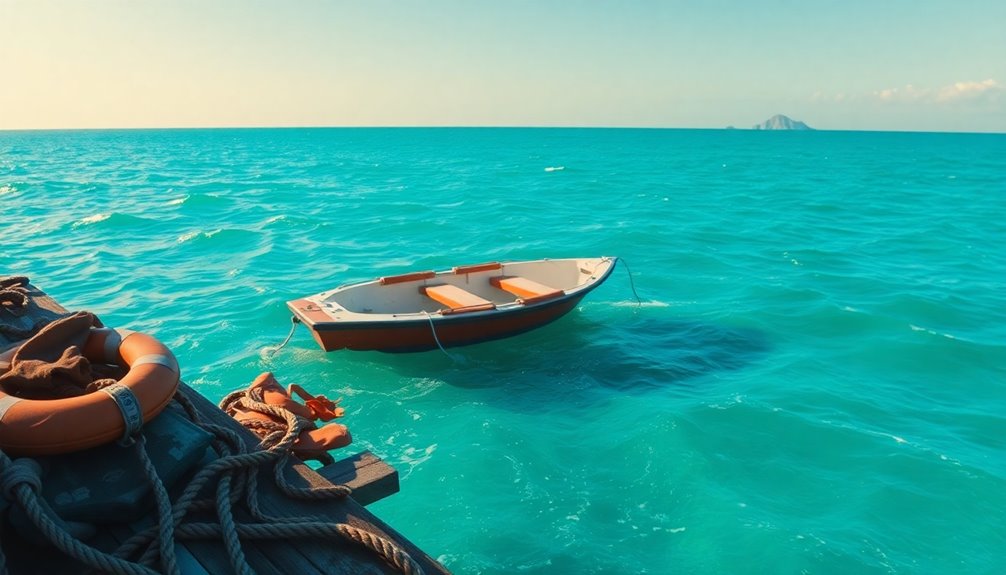
Survivors of shipwrecks often share harrowing tales that remind us of the sea's unpredictability and the human spirit's resilience.
Take the 1998 El Faro shipwreck, where survivors endured five days of extreme conditions, proving the importance of emergency equipment and survival skills.
Then there's the 1972 wreck of the yacht "Bluebelle," where three crew members survived 117 days adrift by rationing food and collecting rainwater.
In 2006, fishermen clung to their capsized boat in the South China Sea, relying on teamwork and improvised signals for rescue.
These survivor stories highlight that taking precautionary measures significantly increases your chance of survival, underscoring the need for preparation and mental resilience when facing the ocean's challenges.
Conclusion
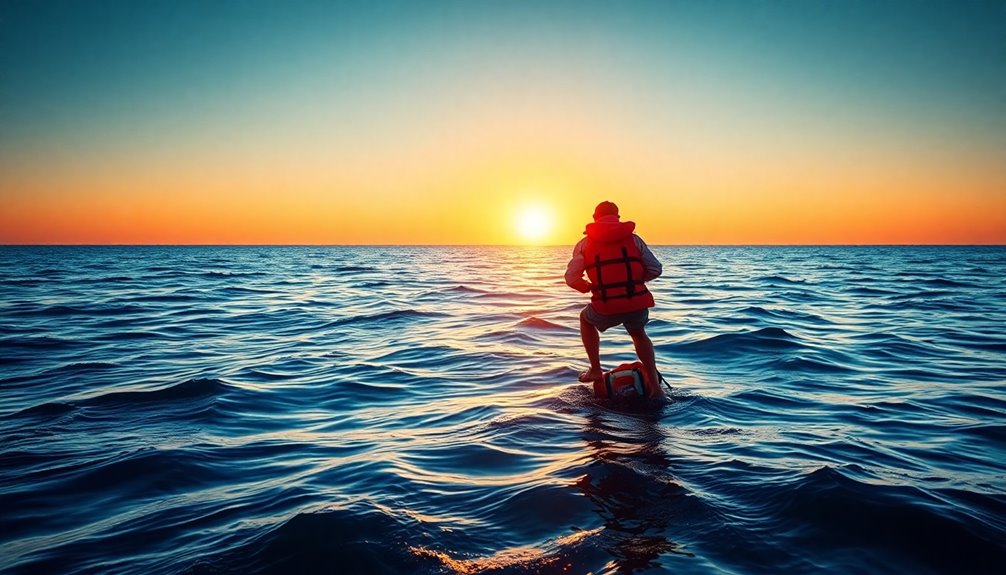
The stories of those who've faced shipwrecks serve as powerful reminders of the unpredictable nature of the sea and the importance of being prepared.
Your survival chances can improve dramatically with the right mindset and tools. Staying calm and maintaining a positive attitude helps you make better decisions and reduces panic.
Prioritize water procurement techniques, like collecting rainwater or using solar stills, since you can only survive a few days without water.
Familiarize yourself with essential survival equipment, particularly signaling devices like flares and whistles, to attract rescuers.
Lastly, conserve energy by using floating techniques and regularly checking your surroundings for signs of land or other people.
Additional Resources
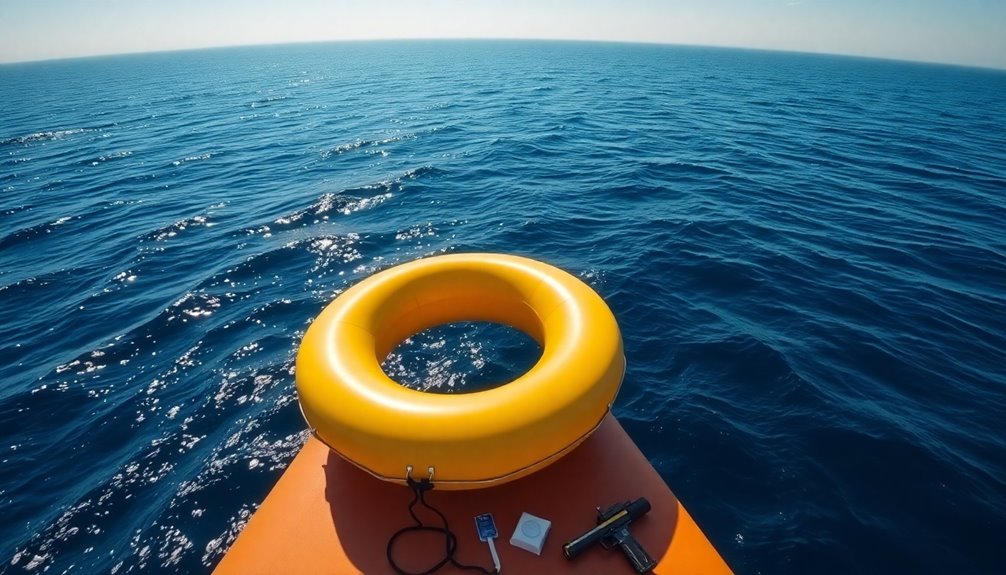
Equipping yourself with knowledge is crucial for surviving at sea, and various resources can enhance your preparedness. Familiarize yourself with survival equipment like life rafts, life vests, and signaling devices to boost your chances of rescue.
Learn essential food sources by mastering fishing techniques; you can improvise lines and hooks from everyday materials. Don't overlook water procurement methods—collect rainwater using tarpaulins or create solar stills for fresh drinking water.
Additionally, understand navigation techniques using the sun and stars to maintain direction. Regularly practice emergency communication strategies with signaling devices and ensure your communication equipment is charged.
Frequently Asked Questions
How to Survive in the Open Ocean?
To survive in the open ocean, you need to focus on a few key strategies.
First, stay afloat by using relaxation techniques and any improvised floating devices you can find.
Collect drinkable water from rain and purify seawater if necessary.
Create fishing lines to catch fish for food.
Use celestial navigation to maintain your direction, and signal for help with flares or large SOS signs made from available materials.
Stay calm and think clearly!
What Is the First Rule of Ocean Survival?
The first rule of ocean survival is to stay calm.
When you're in a tough situation, panic can drain your energy and cloud your judgment. Instead, focus on controlling your breathing and staying composed.
This mindset helps you think clearly and make better decisions. Remember, conserving energy is crucial for your survival, so take a moment to gather your thoughts and assess your surroundings before taking any action.
What Are the 4 Priorities of Survival at Sea?
When you find yourself at sea, your four priorities are crucial for survival.
First, you need to stay afloat, conserving energy while using techniques like back floating.
Next, find water, as you can only last a few days without it.
After securing water, focus on finding food, like fish, but remember that water is your top priority.
Finally, signal for help using flares or reflective items to attract rescuers' attention effectively.
How Do You Survive Being Stranded in the Ocean?
To survive being stranded in the ocean, you need to focus on staying afloat and conserving energy. Use buoyancy techniques or any available flotation devices.
Collect rainwater for hydration, avoiding seawater. Delay eating until you have enough water, and try fishing with improvised lines.
Signal for rescue with reflective items or bright clothing.
Lastly, maintain a positive mindset by setting small goals and keeping a routine to manage anxiety and stay focused.

